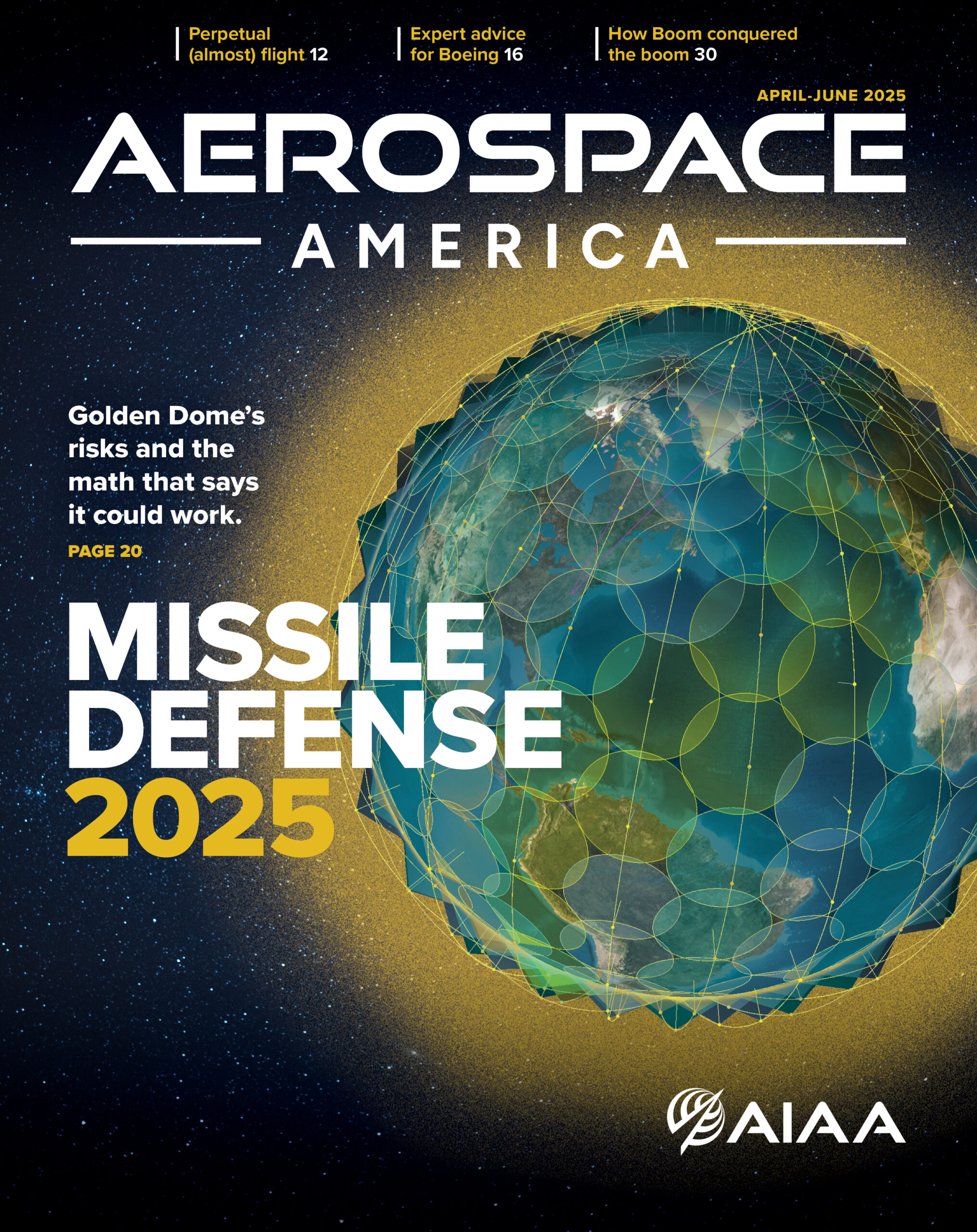Stay Up to Date
Submit your email address to receive the latest industry and Aerospace America news.

Making an Impact: AIAA Announces Winners of Prestigious Zarem Graduate Awards for Distinguished Achievement in Aeronautics and Astronautics
AIAA is pleased to announce the winners of the Zarem Graduate Awards for Distinguished Achievement. The winners will receive their award at AIAA SciTech Forum, National Harbor, MD, 23–27 January 2023.
Rudy Al Ahmar won the aeronautics award for his paper, “On the Kármán–Pohlhausen Momentum-Integral Approach: Extension to Flow Over a Cylinder with a Variable Pressure Gradient.”
Joseph Day won the astronautics award for his paper, “Tip Shape, Height, and Thickness Influences on Nonlinear Acoustic Damping from Baffle Blades.” Day presented his research at the International Astronautical Congress (IAC), held 18–22 September 2022 in Paris, France.
AIAA Honorary Fellow Dr. Abe Zarem, founder and managing director of Frontier Associates, established the Abe M. Zarem Graduate Awards for Distinguished Achievement to annually recognize graduate students in aeronautics and astronautics who have demonstrated outstanding scholarship in their field.
Rudy Al Ahmar
Rudy Al Ahmar is a research and teaching assistant pursuing a graduate degree in Aerospace Engineering at Auburn University. He is a member of the Advanced Propulsion Research Lab working with Joseph Majdalani as his advisor. His current areas of research focus on external aerodynamics, specifically on the application of CFD and analytical models to investigate various flowfield configurations. Al Ahmar recently competed in the AIAA Region II Student Conference and received third place in the Masters division. He tremendously enjoys teaching and helping his fellow undergraduate students improve their skillsets in mathematics, CAD, and aerodynamics. Having already published two articles including a journal paper in the Physics of Fluids, he aspires toward a full-time academic career where he can pay-it-forward to next-generation engineers.
”I am truly honored to receive this recognition. The underlying research extends the theory of both Dr. Majdalani and the late Dr. Xuan who passed away in 2020,” Al Ahmar said. “This prestigious award will significantly bolster my ability to achieve my career-long objective of pursuing a faculty position in aerodynamics.”
Al Ahmar’s faculty advisor, Joseph Majdalani, serves as Professor and Francis Chair of Aerospace Engineering at Auburn University. He previously served the same department as the Auburn Alumni Engineering Council Endowed Professor and Department Chair (2013–2016) as well as the Jack D. Whitfield Professor and H. H. Arnold Chair of Excellence in Advanced Propulsion at the University of Tennessee (2003–2013). Dr. Majdalani is known for his work on acoustic instability theory and vortex-driven rocket engine technology encompassing solid, liquid and hybrid rocket applications. He is a Fellow of ASME, Past Chair of the AIAA Hybrid Rockets and Solid Rockets Technical Committees, Region II Deputy Director of Technical Activities, Director of Honors & Awards within the AIAA Greater Huntsville Section, AIAA Short Course Instructor, Editorial Board Member of Aerospace and the Physics of Fluids, as well as Associate Editor of the International Journal of Aerospace Engineering and the International Journal of Energetic Materials and Chemical Propulsion.
Joseph Day
Joseph Day is a masters student studying mechanical engineering, with an emphasis in thermal fluid sciences. He enjoys working on both experimental and simulation research to study and predict the nonlinear damping that exists in liquid rocket engines. Working on something that has real tangible applications, but is not understood well at all, is quite exciting for him. As he looks to his career, he doesn’t have many professional aspirations, but more so a desire to tackle exciting and fundamental problems that are just not understood.
“I think it is easy to get bogged down in research and the day-to-day monotony of figuring out how in the world to solve a problem, and forget that what you are doing is special and important. So this award reminds me that I am doing good work and encourages me to keep pushing toward the finish line.”
Day’s faculty advisor, Matt Quinlan, is an assistant professor of mechanical and aerospace engineering at the University of Colorado Colorado Springs. He received his B.S. and M.S. in Mechanical Engineering from Colorado State University and his Ph.D. in Aerospace Engineering from Georgia Institute of Technology. Before returning to graduate school, he worked as a diesel fuel system engineer for five years and is an inventor on four patents in this field. His work focuses on the theoretical, experimental, and numerical study of combustion dynamics and instabilities.
For more information on the Abe M. Zarem Graduate Awards for Distinguished Achievement, please contact Michael Lagana at [email protected] or 703.264.7503.

Harry Hilton Memorial Lecture Held in September
On 8 September, the Department of Aerospace Engineering at the University of Illinois Urbana-Champaign hosted a special lecture to honor AIAA Fellow and Professor Emeritus Harry H. Hilton, who passed away earlier this year.
The lecture, Evolution of Aerospace Technologies Supporting National Security Applications, was given by Basil Hassan, AIAA Immediate Past President and the director and deputy chief research officer at Sandia National Laboratories. He reviewed Sandia’s history and highlighted the role that Sandia plays in the development of capabilities that address a variety of aerospace engineering applications of national importance, including energy, homeland security, and defense.

AIAA Hampton Roads Section Kept Busy During the Summer
From articles by Amanda Chou and Karen Berger, HRS K-12 Committee Co-Chairs
AIAA Hampton Roads Section (HRS) took part in several outreach events during the summer including teaching students about lift, thrust, and control surfaces by designing gliders; programing LEGO EV3 robots; and running activities as part of the Kids Zone for the NASA Langley 105th Anniversary Workforce and Family Appreciation Celebration.
On 14 July, HRS was at Poquoson Library for an outreach event. HRS volunteers made foam gliders with the younger age group students who attended. The students had fun learning about lift, thrust, and control surfaces and went back several times to make modifications of their designs to improve the performance of their gliders as they competed for the farthest flying glider and the most accurate flying glider.
AIAA HRS ran two activities on 15 July, as part of the Kids Zone for the NASA Langley 105th Anniversary Workforce and Family Appreciation Celebration. The volunteers braved the summer weather and spent several hours helping to get kids excited about aerospace through hands-on activities.
The kids made straw rockets and also designed, built, and texted their own reentry vehicle in a small vertical wind tunnel. The participation was non-stop the kids seemed to have a great time (with more than one set of parents having to drag the kids away!).
And on 21 July, HRS volunteers taught teens how to program LEGO EV3 robots using the Mindstorm software package. They were tasked with programming their robots in teams to accomplish missions: navigating a maze and driving forward and turning around to tag targets repeatedly as many times as possible. The students used critical thinking and worked as a team to learn how to accomplish complex tasks using only two types of commands in these simple robots. The section is thankful for all the volunteers who devoted their time and energy to these programs.
AIAA Announces 2023 AIAA Design/Build/Fly Draft Rules and Mission
Student teams are invited to participate in the 27th AIAA Design/Build/Fly competition, hosted by Raytheon Technologies in Tucson, AZ. The 2023 mission is to design, build, and test an aircraft to execute electronic warfare (EW) missions. Flight missions will include staging of the aircraft, surveillance, and jamming. The goal is a balanced design possessing good demonstrated flight handling qualities and practical, affordable manufacturing requirements while providing a high vehicle performance. The 2023 rules document can be found at aiaa.org/dbf.
The 2023 Design/Build/Fly will be held at Tucson International Modelplex Park Association (TIMPA), 13–16 April 2023, Tucson, AZ.
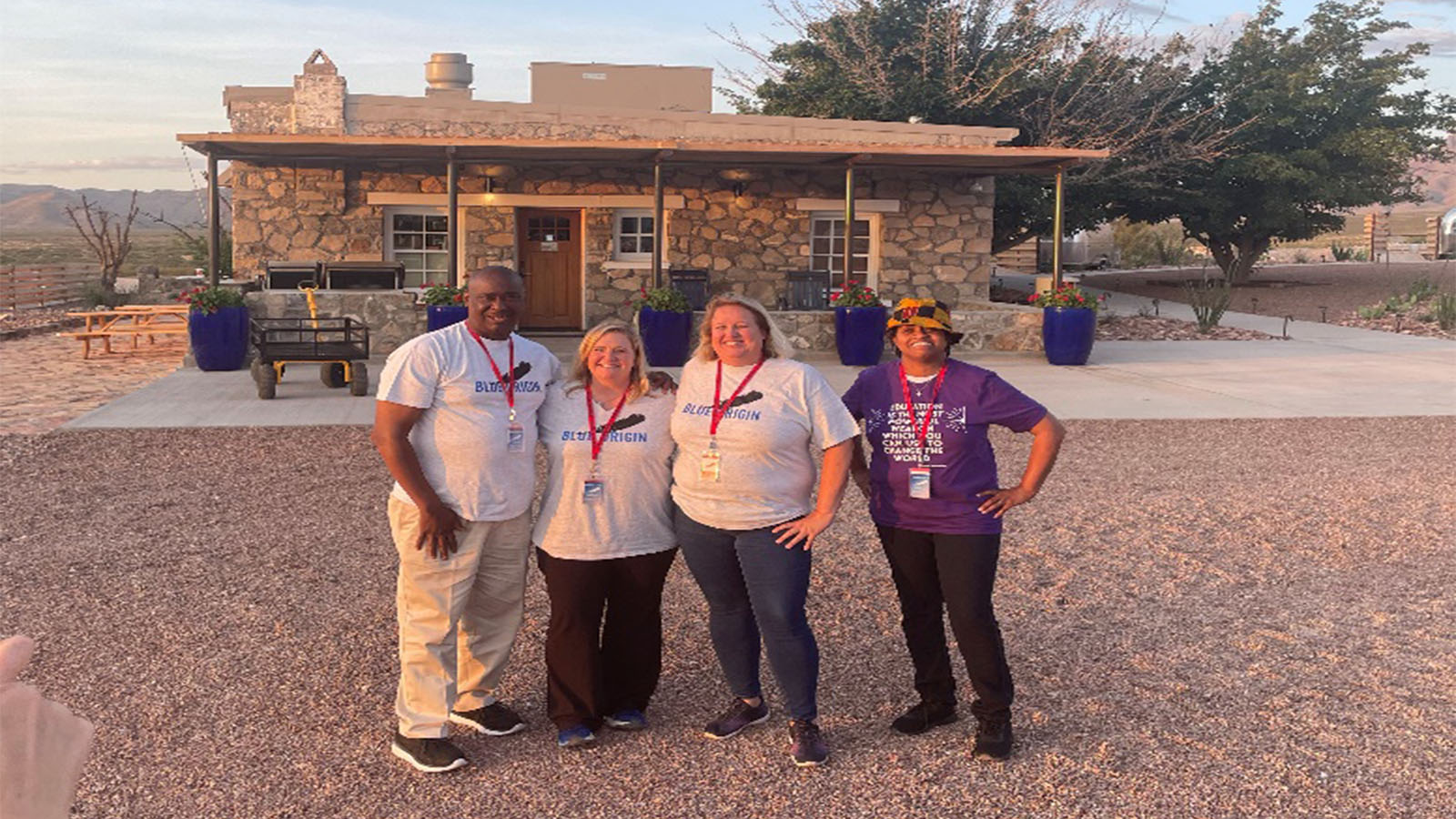
2023 Trailblazing STEM Educator Award Applications Open
AIAA and Challenger Center are continuing our partnership of the Trailblazing STEM Educator Award. The award will celebrate three K-12 educators who go above and beyond to inspire the next generation of explorers and innovators in science, technology, engineering, and mathematics.
The award winners receive $5,000 for the educator, $5,000 for the educator’s school or organization, an all-expense paid trip to Washington, DC, to be honored at the AIAA Awards Gala, and free access to Challenger Center’s STEM education programs.
Details at: aiaa.org/get-involved/educators/trailblazing-stem-educator-award.
AIAA Roger W. Kahn Scholarship Applications Open
AIAA will award four $10,000 scholarships to current high school seniors who plan to study aerospace engineering at a college or university in fall 2023. AIAA will also provide an all-expense paid trip to Washington, DC, to attend the AIAA Awards Gala, where we recognize top aerospace professionals and contributors to the aerospace community. Each student also will be provided with a mentor from AIAA’s professional members to help guide the students to achieve a career in aerospace.
Details of the eligibility and requirements can be found at aiaa.org/kahnscholarship. Applications Close: 31 December 2022
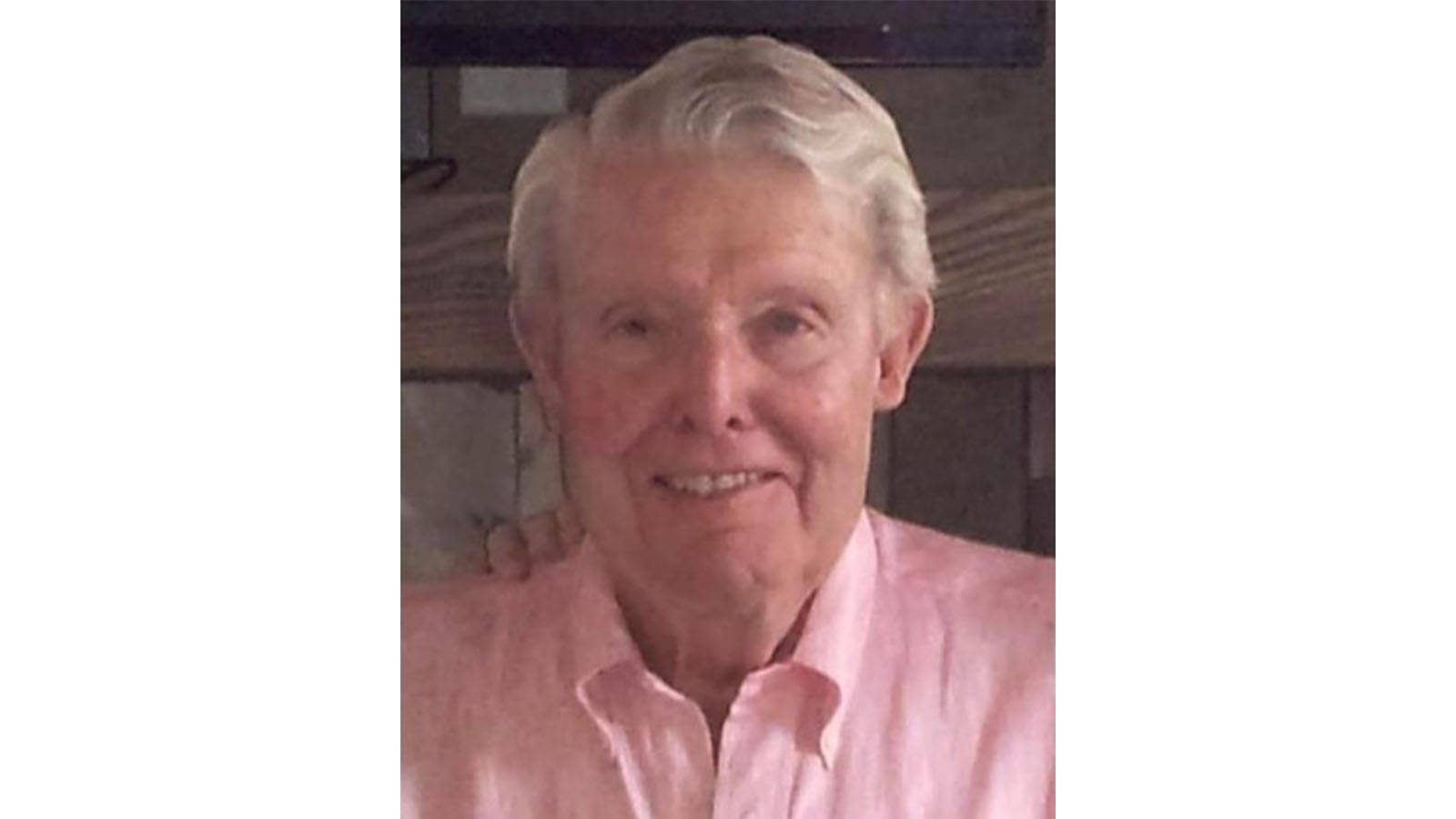
AIAA Fellow Petersen Died in June
Richard H. “Pete” Petersen, 87, died on 18 June.
In 1956, Petersen graduated with highest distinction from Purdue University with a Bachelor of Science degree in Aeronautical Engineering, followed immediately by a year at California Institute of Technology (Cal Tech), receiving a Master’s degree in Aeronautical Engineering. He had been in the U.S. Air Force Reserve Officer Training Corps (ROTC) while at Purdue and was commissioned as an Air Force officer in 1956. The Air Force called him to active duty and assigned him to NASA (then National Advisory Committee for Aeronautics) Ames Research Center as a Research Engineer. After completing his Air Force service, he became a NASA employee. Petersen also graduated as a Sloan Executive Fellow from the Stanford Graduate School of Business in 1973.
Most of Petersen’s early career at NASA was focused on theoretical and experimental aerodynamics, particularly in the supersonic and hypersonic speed ranges. His projects included the Mercury capsule, the XB-70 Valkyrie Mach 3 bomber, and other novel research and development programs. In the mid-1960s, as computing became more embedded into aerodynamic research, Petersen directed computer studies of advanced aircraft including hypersonic transports, air-breathing launch vehicles, short takeoff and landing transports, and general aviation aircraft.
Petersen rose through various leadership positions at NASA Ames, including Branch Chief and Aeronautics Division Chief. In 1980, Petersen became Deputy Center Director at NASA Langley Research Center, eventually serving as Langley Center Director (1985–1991). He finished his NASA career at NASA Headquarters as Associate Administrator for the Office of Aeronautics and Space Technology (OAST) before retiring from NASA in 1993.
Petersen volunteered with AIAA in several capacities, including as the Chair, International Activities Committee (1988–1997) and Vice President, International (1994–1995) for the Board of Directors. He also served as President of the International Council of the Aeronautical Sciences (1994–1996).
Among his many professional honors are the 1991 AIAA Reed Aeronautics Award, the 2000 AIAA International Cooperation Award (co-recipient), a Distinguished Presidential Rank Award, a NASA Outstanding Leadership Medal, National Academy of Engineering Director Emeritus, and honorary doctorates from Purdue University, George Washington University, and the College of William & Mary.
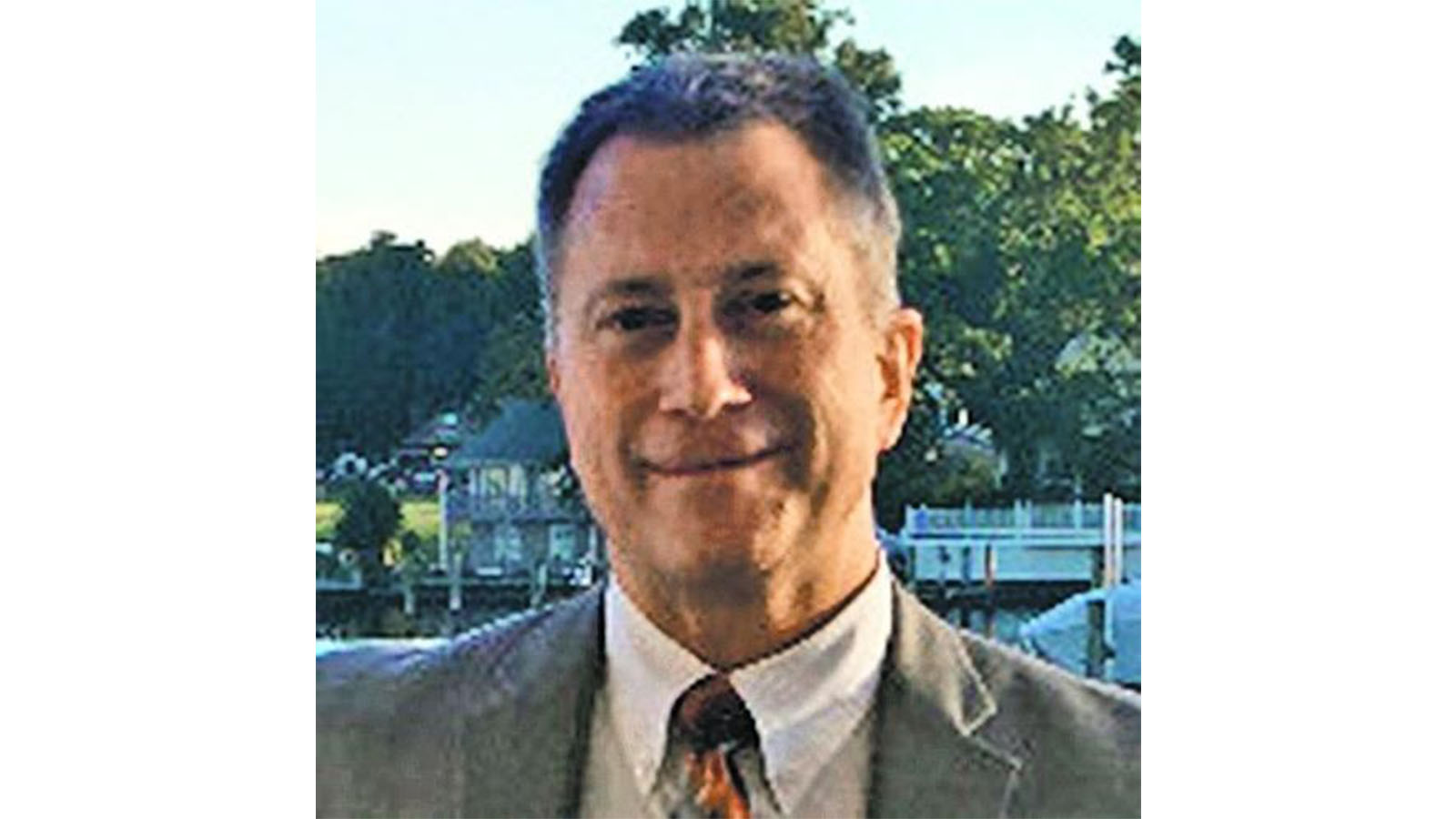
AIAA Associate Fellow Harvey Died in August
Raymond J. Harvey died on 12 August. He was 60 years old.
Harvey had a B.S. in Aerospace Engineering from the University of Maryland and over 35 years experience in systems engineering and mission operations. At Johns Hopkins University Applied Physics Laboratory (JHU-APL), he was most recently the Mission Operations Manager (MOM) for NASA’s DART (Double Asteroid Redirection Test) mission, as well as for the Van Allen Probes mission, IMAP, and the CAT mission, among others.
As DART MOM, his responsibilities included interfacing with the project manager, systems engineers, all subsystem engineers, ground software, IT, and many others. As DART is planned to impact the asteroid Dimorphos on 26 September, the loss of Harvey will be felt.
Harvey was a member of APL’s Principal Professional Staff (PPS), a recognition of the highest professional standing and individual achievement at APL. In addition to being the SES-SIO (Space Exploration Sector – Space Integration Mission Operations Group) Assistant Group Supervisor for over 10 years, he also served as the group’s representative to the SES Engineering Architecture Counsel and as the group’s chief engineer.
Harvey enjoyed giving tours of the Mission Operations Centers, especially to college and high school students and newly employed staff. He was dedicated to introducing the field of space exploration and its excitement to young people.
A member of AIAA since 1983, Harvey was made an Associate Fellow in 2018. He served as the Chair for the Best Practices and Standards Subcommittee, leading a team of people developing and advancing Space Mission Operations Best Practices. He was also a member of the AIAA Space Operations and Support Technical Committee from 1999 to 2005.
Harvey authored on the order of 20 publications ranging from mission operations concepts to spacecraft fault protection to spacecraft integration and test. He was recognized with as many six NASA Group Achievement awards.
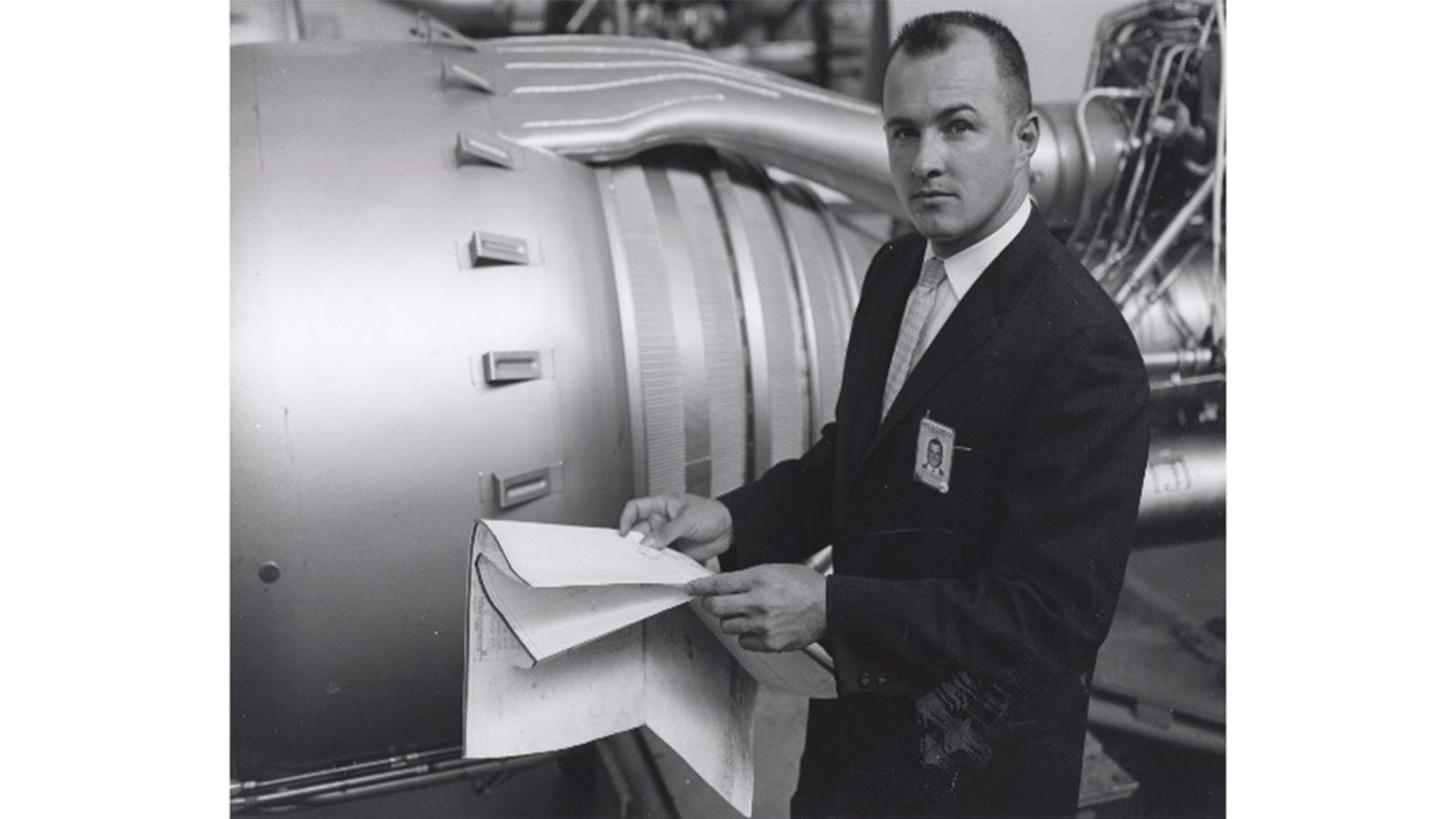
AIAA Senior Member Wheelock Died in August
Vincent J. Wheelock died on 28 August. He was 89 years old.
Wheelock joined the U.S. Air Force in 1951 and during his four years of service became a F-80C Shooting Star and F-86 Sabre jet engine mechanic in Korea. He received his Bachelor’s degree in Mechanical Engineering from Iowa State University in 1958, later earning the college’s coveted Professional Achievement Citation in Engineering (PACE) in 1997 for his contribution to the space program.
Wheelock joined the Rocketdyne Division of North American Aviation and remained with them throughout his career. He supported the space program and contributed wherever there was a need: NASA Kennedy Space Center, Edwards and Vandenberg Air Force Bases, NASA Marshall Space Flight Center, NASA Stennis Space Center, General Dynamics, and his home office at the Rocketdyne Facility in Canoga Park and at Santa Susana Field Laboratory. He enjoyed an exciting career spanning from the infancy of rocketry to putting a man on the moon, the International Space Station and beyond, all with the company he enjoyed.
In retirement, Wheelock contributed on several books, most notably Rocketdyne: Powering Humans into Space. He continued consulting on many efforts at Rocketdyne, including the collection and maintenance of the history of Rocketdyne, and as the curator of the Leadership and Learning Center at the facility. The Air Force Research Lab (AFRL) at Edwards AFB contacted him to help identify legacy rocket parts that were left all over the desert from the original space flight testing there.
He also received awards and recognition from worldwide organizations including multiple awards and certificates of appreciation from NASA and the U.S. Air Force, and his name was engraved on the Wall of Honor at the Air and Space Museum.
AIAA Announces Section Awards Winners
AIAA has announced its 2021–2022 section awards winners. The section awards honor particularly notable achievements made by member sections in a range of activities that help fulfill the Institute’s mission of shaping the future of aerospace. Each of the 56 local sections throughout the United States and overseas offer technical programs and activities tailored to local aerospace professionals, students, and educators.
Section awards are given annually in five categories based on the size of each section’s membership. Each winning section receives a certificate and a cash award. The award period covered is 1 June 2021–31 May 2022. The Institute believes that vital, active sections are essential to its success.
The Outstanding Section Award is presented to sections based upon their overall activities and contributions through the year. The winners are:
VERY SMALL: First Place: Central Coast of California, Michelle Itzel-Montoya (U.S. Space Force), section chair; Second Place: Delaware, Daniel Nice (Northrop Grumman Corporation), section chair; Third Place: Adelaide, Patrick Neumann (Neumann Space), section chair
SMALL: First Place: Northwest Florida, Ryan Sherrill, section chair; Second Place: Palm Beach, Randy Parsley (Pratt & Whitney), section chair; Third Place: Wichita, Atri Dutta (Wichita State University), section chair
MEDIUM: First Place: Tucson, Teresa Clement (Raytheon Corporation), section chair; Second Place: Greater Philadelphia, Jonathan Moore (Lockheed Martin Corporation), section chair; Third Place: Illinois, Harry Hilton and Laura Villafañe Roca (University of Illinois at Urbana-Champaign), section chairs
LARGE: First Place: San Diego, Joel Perez (Ursa Major Technologies), section chair; Second Place (tie): Northern Ohio, Joseph Connolly (NASA Glenn Research Center), section chair; Second Place (tie): St. Louis, Sanjay Jayaram (Saint Louis University), section chair
VERY LARGE: First Place: Los Angeles-Las Vegas, Jeffery Puschell (Raytheon Intelligence and Space), section chair; Second Place: Greater Huntsville, Theresa Jehle, section chair; Third Place: Rocky Mountain, Alexandra Dukes (Lockheed Martin Space Systems), section chair
The Communications Award is presented to sections that have developed and implemented an outstanding communications outreach program. Winning criteria include level of complexity, timeliness, and variety of methods of communications, as well as frequency, format, and content of the communication outreach. The winners are:
VERY SMALL: First Place: Central Coast of California, Steven Boelhouwer (ManTech International), communications officer; Second Place: Adelaide, Patrick Neumann (Neumann Space), section chair; Third Place: Delaware, Daniel Nice (Northrop Grumman), section chair
SMALL: First Place: Sydney, Daniel Walsh (Qantas Airways), section chair; Second Place: Northwest Florida, Ryan Sherrill, section chair, and Angela Diggs (AFRL), section vice chair; Third Place: Long Island, David Paris, section chair
MEDIUM: First Place: Phoenix, Scott Fouse (Fouse Consulting Services), section chair; Second Place (tie): Greater Philadelphia, LizaMarie Kupp (St. John Paul II Academy), section vice chair; Second Place (tie): Carolina, John Blanton (Classic Engineering), section chair; Third Place: Tucson, Huntington Gazecki (Raytheon Missiles & Defense), communications officer
LARGE: First Place: Albuquerque, Robert Malseed, newsletter editor; Second Place: San Diego, Stevie Jacobson (General Atomics Aeronautical Systems), section webmaster; Third Place (tie): Northern Ohio, Edmond Wong (NASA Glenn Research Center), communications officer; Third Place (tie) St. Louis, John Shultz (The Boeing Company), communications officer
VERY LARGE: First Place (tie): Los Angeles-Las Vegas, Ken Lui (Ken’s Consulting), webmaster; First Place (tie): New England, Hiroaki Endo (Schenck USA), section chair; Third Place (tie): Greater Huntsville, Tracie Prater (NASA Marshall Space Flight Center), section vice chair; Third Place (tie): Hampton Roads, Lee Mears (NASA Langley Research Center), newsletter editor
The Membership Award is presented to sections that have supported their membership by planning and implementing effective recruitment and retention campaigns. The winners are:
VERY SMALL: First Place: Delaware, Christina Larson (Northrop Grumman), communications officer; Second Place: Adelaide, Patrick Neumann (Neumann Space), section chair; Third Place: Southern New Jersey, Scott Doucett (FAA), membership officer
SMALL: First Place: Northwest Florida, Philip Thomas (ERC Incorporated), membership officer; Second Place: Wichita, Mary Drouin (Spirit Aerosystems), membership officer; Third Place: Utah, Michael Miller (Northrop Grumman Corporation), membership officer
MEDIUM: First Place: Tucson, Robert Michalak (Paragon Space Development), membership officer; Second Place: Greater Philadelphia, Jason Boyer (The Boeing Company), membership officer; Third Place, Illinois, Ashraf Omran (JHU/APL), membership officer
LARGE: First Place: San Diego, Joel Perez (Solar Turbines), section chair; Second Place: St. Louis, Alex Friedman (The Boeing Company), membership officer; Third Place: Orange County, Robert Welge (Robert’s Engineering Development), membership officer
VERY LARGE: First Place: Los Angeles-Las Vegas, Aldo Martinez Martinez (The Boeing Company), and Sherry Stukes (JPL), membership officers; Second Place (tie): Hampton Roads, Richard Winski (NASA Langley Research Center), membership officer; Second Place (tie): Greater Huntsville, Paul Palies (University of Tennessee Space Institute), membership officer
The Public Policy Award is presented for stimulating public awareness of the needs of aerospace research and development, particularly on the part of government representatives, and for education section members about the value of public policy activities. The winners are:
VERY SMALL: First Place: Delaware, Di Ena Davis, public policy officer; Second Place: Central Coast of California, Michelle Itzel-Montoya (U.S. Space Force), public policy officer and section chair
SMALL: First Place (tie): Northwest Florida, Michael Kelton (U.S. Air Force), membership officer; First Place (tie): Palm Beach, Kevin Simmons (BLUECUBE Aerospace), public policy officer
MEDIUM: First Place: Greater Philadelphia, Joi Spraggins (Legacy Bridges STEM Academy), public policy officer; Second Place: Illinois, Mordechai Levin (Masterflight Foundation) and Mark Wendtland (Eblana Photonics), public policy officers
LARGE: First Place: Northern Ohio, Michael Heil (ML Heil Consulting), public policy officer; Second Place (tie): Orange County, Kamal Shweyk (Boeing Commercial Airplanes), public policy officer; Second Place (tie): San Diego, Mike Curtin, public policy officer
VERY LARGE: First Place: Greater Huntsville, Naveen Vetcha (ERC Incorporated), public policy officer; Second Place: Los Angeles-Las Vegas, Jordan Chilcott, public policy officer; Third Place: Rocky Mountain, Lisa Gregg (Lockheed Martin Space Systems)
The STEM K-12 Award is presented to sections that have developed and implemented an outstanding STEM K-12 outreach program that provides quality education resources for K-12 teachers in the STEM subject areas. The winners are:
VERY SMALL: First Place: Central Coast of California, Thomas Stevens (U.S. Air Force), STEM K-12 outreach officer; Second Place: Delaware, Daniel Nice (Northrop Grumman Corporation), section chair; Third Place: Point Lobos, Giovanni Minelli (Naval Postgraduate School), section chair
SMALL: First Place: Palm Beach, Shawna Christenson (Aerospace and Innovation Academy), STEM K-12 outreach officer; Second Place: Northwest Florida, Judith Sherrill, STEM K-12 outreach officer; Third Place, Wichita, Brian Kaplinger (University of Kansas), STEM K-12 officer
MEDIUM: First Place: Tucson, Michelle Rouch (Artwork by Rouch), STEM K-12 officer; Second Place: Greater Philadelphia, Christopher Reynolds (Lockheed Martin Corporation), STEM K-12 officer; Third Place: Antelope Valley, Robert Jensen (Sierra Lobo), STEM K-12 officer
LARGE: First Place: St. Louis; Jackie Blumer (Greenville Jr. High School), STEM K-12 outreach officer; Second Place: Cape Canaveral, Melissa Sleeper (Storm Grove Middle School/School District of Indian River), STEM K-12 outreach officer; Third Place: Northern Ohio, Jonathan Kratz (NASA Glenn Research Center), STEM K-12 officer
VERY LARGE: First Place: Rocky Mountain, Trip Carter (Lockheed Martin Corporation), education officer; Second Place: Greater Huntsville, Robin Osborne (ERC), STEM K-12 officer; Third Place: Los Angeles-Las Vegas, Khushbu Patel, and Arpie Ovsepyan (Herbert Hoover High School), STEM K-12 outreach officers
The Section-Student Branch Partnership Award recognizes the most effective and innovative collaboration between the professional section members and student branch members.
VERY SMALL: First Place: Adelaide, Mahdy Alhameed (University of Adelaide), section secretary; Second Place: Central Coast of California, Steven Serniak, (U.S. Space Force), programs officer; Third Place: Iowa, Roger Kassebaum (Founders Bootcamp), university liaison
SMALL: First Place: Twin Cities, Kristen Gerzina (Northrop Grumman Corporation), section chair, and Robert Halverson (University of Minnesota); Second Place: Wichita, Linda Kliment (Wichita State University), education officer; Third Place: Northwest Florida, John Fay (Torch Technologies), education officer
MEDIUM: First Place: Tucson, Peter Olejnik (University of Arizona), young professional officer; Second Place: Greater Philadelphia, Jonathan Moore (Lockheed Martin Corporation), section chair; Third Place: Illinois, Andrew Strubhar (University of Illinois at Urbana-Champaign), student branch liaison
LARGE: First Place: San Diego, Joel Perez (Solar Turbines), section chair; Second Place (tie): St. Louis, Charles Svoboda (The Boeing Company), education officer; Second Place (tie): San Gabriel Valley; Gregory Davis (JPL), university liaison; Third Place, Central Florida, Christopher Stevens (Lockheed Martin Corporation), section chair
VERY LARGE: First Place: Los Angeles-Las Vegas, Khushbu Patel, STEM K-12 officer, and Luis Cuevas (Lockheed Martin Corporation), education officer; Second Place: Rocky Mountain, Marshall Lee (BedRock Systems), section vice chair; Third Place: New England, Phoenix Robbins (Raytheon Technologies), education officer, and Charlie Wilson, council member
The Young Professional Activity Award is presented for excellence in planning and executing events that encourage the participation of the Institute’s young professional members, and provide opportunities for leadership at the section, regional, or national level. The winners are:
VERY SMALL: First Place: Delaware, Taylor Coleman, young professional officer; Second Place: Adelaide, Samuel Moyes (Flinders University), section vice chair; Third Place: Central Coast of California, Steven Serniak (U.S. Space Force), young professional officer
SMALL: First Place: Utah, Cliff Rossberg (Northrop Grumman Corporation), young professional officer; Second Place: Northwest Florida, Alexandra Straub (U.S. Air Force), young professional officer; Third Place: Wichita, Andrew Sklar (Renew Wichita), young professional officer
MEDIUM: First Place: Tucson, Peter Olejnik (University of Arizona), young professional officer; Second Place: Greater Philadelphia, Jonathan Moore (Lockheed Martin Corporation), section chair; Third Place: Antelope Valley, Jason Lechniak (NASA Armstrong Flight Research Center), section chair
LARGE: First Place: St. Louis, Stephen Clark (The Boeing Company), young professional officer; Second Place: Northern Ohio, Halle Buescher (HXFive), young professional officer; Third Place: San Diego, Joel Perez (Ursa Major Technologies), section chair
VERY LARGE: First Place: Hampton Roads, Michelle Lynde (NASA Langley Research Center), Brett Hiller (NASA Langley Research Center), and Morgan Walker (NASA Langley Research Center), young professional section officers; Second Place: Rocky Mountain, Marshall Lee (BedRock Systems), section vice chair; Third Place: Houston, Josh Kivijarv, young professional officer
The Outstanding Activity Award allows the Institute to acknowledge sections that held an outstanding activity deserving of additional recognition. The winners are:
VERY SMALL: Delaware, Daniel Nice (Northrop Grumman), section chair. The Teen Warehouse Event. The AIAA Delaware Section was invited by The Link Incorporated to showcase the opportunities in aerospace field to The Teen Warehouse. AIAA recruited a group of five individuals from Northrop Grumman Corporation’s Elkton, MD, facility. The diverse panel, all with various backgrounds and positions within Northrop, showcased career opportunities ranging from manufacturing, operations, business, finance, and engineering. Being from a solid rocket world the “Break it Down—Let’s Talk Rocket Science” presentation revolved around the history of propulsion, an exciting a look into solid rocket motors, and was capped with a build-your-own foam rocket activity. The foam rocket activity focused on techniques to build, launch trajectory, and teamwork. There were over 20 teens present and another dozen or more via Zoom.
SMALL: Palm Beach, Randy Parsley (Pratt & Whitney), section chair. Preparing Middle and High School Students to Write, Publish, and Present Technical Work at Aerospace Conferences. The AIAA Palm Beach Section council members prepared dozens of local high school students to write and submit papers to several conferences, including the International Astronautical Congress. Last fall, 11 students travelled to Dubai, UAE, where they made six separate presentations on topics ranging from orbital settlements and CubeSat propulsion to the most recent NASA-selected CubeSat they are building. The Palm Beach Section council members also guided ~24 students who had 32 other papers accepted at several different conferences.
MEDIUM: Antelope Valley, Jason Lechniak (NASA Ames Flight Research Center), section chair. Engineering Week History Symposium. This four-hour virtual event, with over 50 attendees, put together lessons learned from a distinguished speaker on the X-1, and high-level leadership and engineers in the C-17 and F-16 high angle of attack programs. The final presentation was from the surviving flight test engineer of the B-1 accident where one pilot was killed.
LARGE: San Diego, Nick Candrella (Naval Air Warfare Center), section vice chair. Aerospace Trivia Night, Networking for Scholarships. This event allowed students to network with members so they could search for scholarship sponsors and members could meet students and other members while having a great time. The trivia setup required at least teams of two, with some fun team names. Each team got one Ghirardelli Chocolate Squares sampler pack, with eight rounds of three questions each (Movie, Event, “Name that Equation!”), giving 30 seconds to guess each answer. The event took place at a local brewery. The section ordered pizza to provide a good intermission with time to network.
VERY LARGE (tie): Greater Huntsville, Robin Osborne, pre-college outreach officer. Rocket City Invitational Quiz Bowl Tournament. The section hosted the first-ever AIAA Rocket City Invitational academic quiz bowl for Alabama. There were 18 teams with 84 students from 15 high schools (many outside of Huntsville) and two middle schools. Awards were presented to the winners of a separate online, pre-tournament Buzzword Challenge open to all section members, and a traditional, in-person quiz bowl tournament for the 18 teams. With a $3,000 grant that the section won through The Boeing Company, the section commissioned the National Academic Quiz Tournament to write a custom question set for the Buzzword platform covering a wide variety of topics in aerospace and aviation. You can play a sample game at www.naqt.com/buzzword/special/aerospace.jsp.
VERY LARGE (tie): Los Angeles-Las Vegas, Jeffery Puschell (Raytheon Intelligence and Space), section chair. Los Angeles-Las Vegas Section University Student Branches Mini-Conference 2022. This event supported the rising stars of American aerospace. Students discussed their projects and life in the pursuit of their career. The career panel and other sessions offered professional inspirations and guidance as well. The keynote speech by Dr. Henry B. Garrett touched the importance of professionalism with the example of the space weather, solar storm, and recent SpaceX Starlink launch anomaly.
Stay Up to Date
Submit your email address to receive the latest industry and Aerospace America news.
